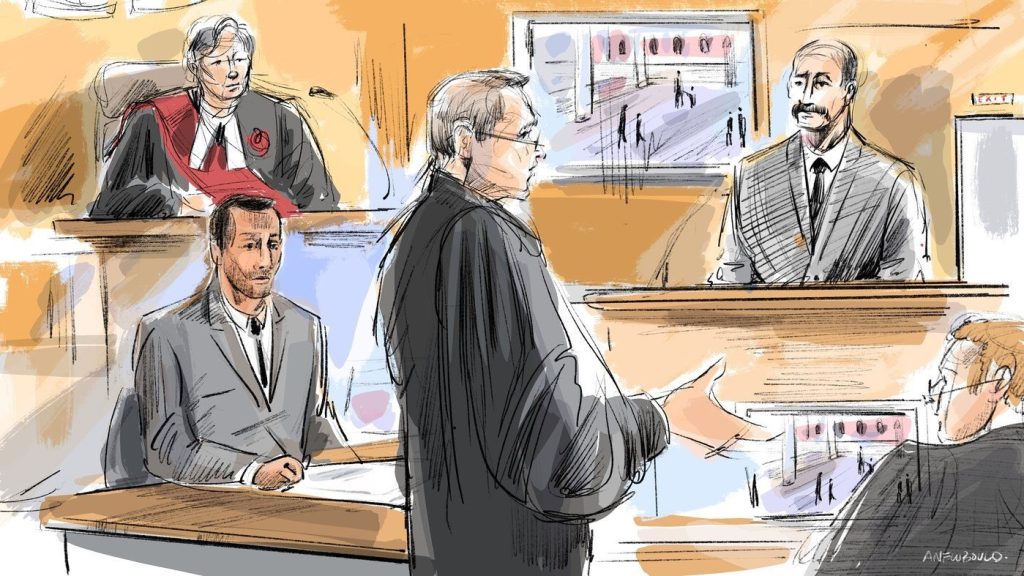Lindros’ Hall of Fame career was without compare: “He’s one in a lifetime”
Posted November 14, 2016 11:05 am.
Last Updated November 14, 2016 12:20 pm.
This article is more than 5 years old.
So much about the career of Eric Lindros reads like a Hollywood script, including where the incoming Hall of Famer lived when he entered the National Hockey League.
It was about a month into Lindros’ rookie season with the Philadelphia Flyers that the controversial prodigy asked veteran teammate Kevin Dineen if he could move in with Dineen and his newlywed wife Annie.
“And I was like ‘Ah, let me go home and talk to my wife about that,'” Dineen recalled almost 25 years later.
Lindros had already bought a townhouse with “everything you could ever want,” but he was also a teenager in a harsh, unforgiving American city and Dineen figures he was probably a little bit lonely.
So in Lindros moved for a two-year period which saw the Dineen household flush with dogs and a growing, makeshift family. The unlikely unit would have breakfast and dinner together and sometimes Lindros and Dineen would sneak into classes at the University of Pennsylvania, where Annie was working toward her master’s degree.
“It was funny in a lot of ways,” Dineen said. “It was like having a little brother who was much bigger than you.”
Finally entering the Hockey Hall of Fame alongside Rogie Vachon, Sergei Makarov and the late Pat Quinn, Lindros really did have a career that was without compare, both in how it evolved on and off the ice. He repeatedly balked at the rigged rules and systems in pro hockey, a true maverick in a sport where uniformity is cherished. He was also truly unique talent on the ice not seen before or since.
“He was probably the most dominant player during his time in the NHL,” long-time teammate Rod Brind’Amour said.
At six foot four and more than 200 pounds, Lindros was like a freight train on skates, but one that had the agility and skills to move like a race car.
Brind’Amour still remembers hopelessly trying to defend him at his first practice with the Flyers in 1992. Lindros had one hand on his stick as he rushed down the wing, but still somehow whipped a wrist shot into the top corner.
“And I’m like, nobody can do that in the NHL,” said Brind’Amour. “And of course, if he wanted to run you over he could run you through the boards. And then if you wanted to fight he could fight. There was just nothing that he couldn’t really do. And that was impressive because there wasn’t really anyone in the NHL that could do everything.”
Brind’Amour’s jaw remains agape when he recalls Lindros having his way with famed tough guy Marty McSorley. At the time he thought “what’s this kid going to be like in a couple years?”
Dineen believes his former teammate should be remembered as a progressive force, especially in the concussion awareness movement, someone who swerved left when everyone else might have gone right. His decisions might not have always looked right or pleased others, but they were right for Lindros and that, Dineen says, is what matters.
“He gets painted a little bit with the ugly brush because of the stands he took,” Dineen, now a Chicago Blackhawks assistant coach, said.
Lindros refused to play for the team that drafted him No. 1 overall not once, but twice. The prelude to his well-known spurning of the Quebec Nordiques in 1991 came in 1989 when he also declined to play for the Sault Ste. Marie Greyhounds of the Ontario Hockey League, the club later trading him to Oshawa.
Lindros sat out the 2000-01 season waiting for a trade out of Philly, a move that would shatter the hockey world if a prodigy like Edmonton’s Connor McDavid went that same route. And consider the scorn Sidney Crosby might have faced had he fought with the Pittsburgh Penguins over concussion treatment in the same bitter public fashion as Lindros with then-Flyers general manager Bobby Clarke.
“It’s not like you’re looking to go upstream,” Lindros said. “The choices that I made were choices that other people had done before me. It wasn’t like it was fresh territory.”
Except it sort of was.
Lindros’ career will be defined as much by what it was as what it wasn’t.
Injuries limited him to less than 800 regular season games and retirement at age 34. The numbers match up well with the greats, there’s just no longevity to them, and whether he’s to blame or not, Lindros also lacks that precious Stanley Cup.
It’s worth wondering what his career might have looked like had he been healthier. Brind’Amour thinks Lindros’s brute, physical style would eventually have taken its toll and degraded his productivity.
Regardless, Lindros made a dent on the sport. His greatness, his dominance, the uniqueness of all that he was, none of that can be denied.
“He’s one in a lifetime,” Brind’Amour said. “I don’t know if you’ll ever see a player like him because the game’s changed so much now. The physical part of the game is kind of out the door. No kids growing up are trying to be like that. It’s all skill and skating so I don’t know that you’re going to see that kind of player again.”










